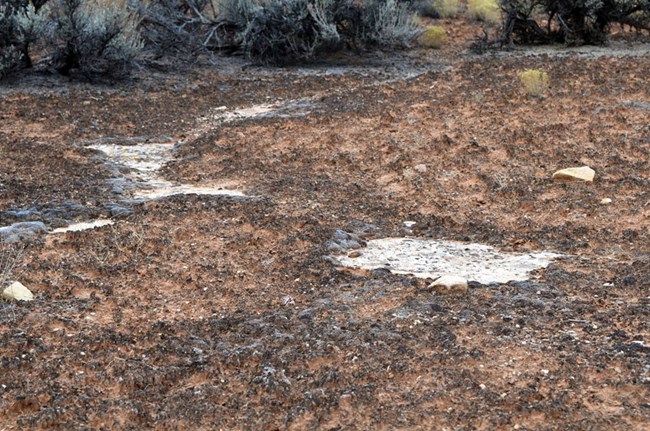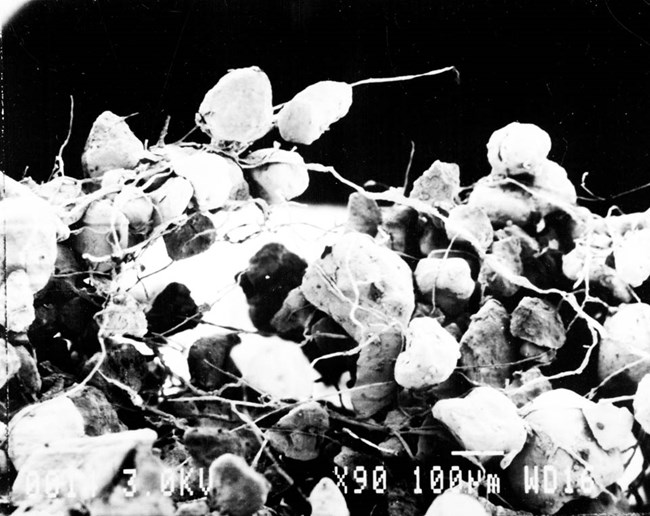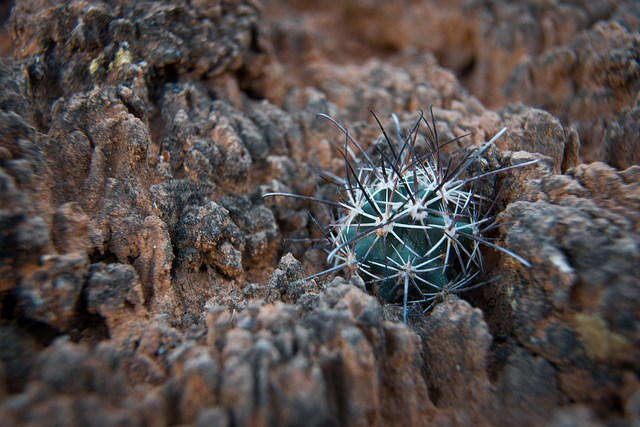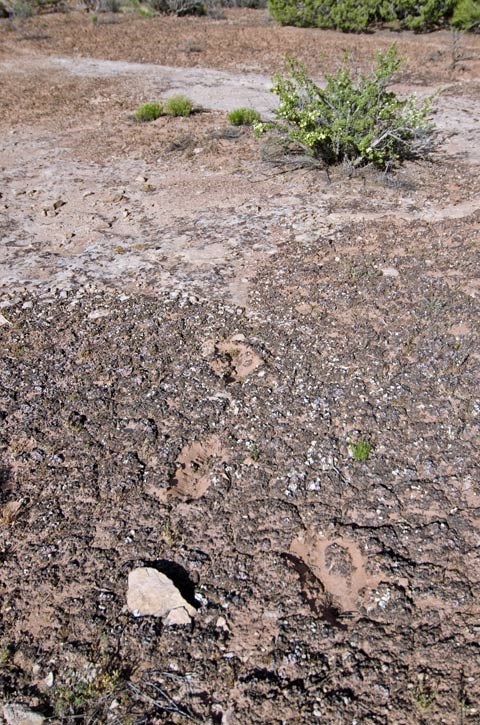Article
Biological Soil Crust of Southeast Utah

NPS/Austin Tumas
In the Colorado Plateau’s high desert, the winding canyons, curving arches, and ancient dwellings draw the eye. But eyes turned downward will notice that most of this place is covered in bumpy, clumpy, blackened soil. This soil may just be more fascinating and more important than any other desert feature. This dirt is alive!

NPS Photo
What is biological soil crust?
Biological soil crust is just what the name describes – a living soil that creates a crust over the landscape. Biological soil crust is found throughout the world, from the Colorado Plateau’s high desert to the arctic! In many places, soil crust comprises over 70 percent of all living ground cover. The knobby, black crust here includes lichen, mosses, green algae, microfungi, and bacteria, but is dominated by cyanobacteria.
Cyanobacteria, also called green-blue algae, are one of the oldest known life forms. We believe that cyanobacteria were among the first organisms to colonize Earth's early land masses and played an important part in forming Earth’s early soils. Extremely thick mats of cyanobacteria converted the earth's original carbon dioxide-rich atmosphere into one rich in oxygen and capable of sustaining life.

USGS Photo
In biological soil crust, cyanobacteria are dormant when dry. When wet, they move through the soil, leaving behind sticky fibers that form an intricate web. These fibers join soil particles together, creating a thick layer of soil that’s resistant to erosion. This layer acts like a sponge, absorbing and storing water. Over time, lichen, moss, and other organisms grow onto the soil as well. Together, these organisms create a continuous living crust.
Young crusts are flat and brown and look like bare earth. The bumpy, black crusts - sometimes sprinkled with lighter lichen or moss – are mature. Some crusts can be thousands of years old!

NPS/Neal Herbert
Protector of the Desert
Biological soil crust has helped shape today's high desert. Soil crust helps control erosion by keeping soil stuck together in one continuous crust. Sediment doesn’t wash away in the rain or blow away in the wind. This is why the Colorado Plateau’s high desert isn’t covered in loose sandy dunes.
Soil crust also holds and retains water. Plant roots tap into this spongy crust to survive dryer and hotter conditions. It also promotes plant life by taking nitrogen from the air and changing it to a kind of nitrogen plants need.
Without these effects, animals, and even humans, would not be able to survive well in the desert.

NPS Photo
Look where you Step
Unfortunately, humans can destroy soil crust and often do so without meaning to. Vehicle tracks, bicycles, and footprints are extremely harmful – even a single footprint can kill the soil crust immediately below. Continuous pressure can break up the crust. Then, rain or wind can scatter the pieces.
Impacted areas may never fully recover. Under the best circumstances, a thin veneer of biological soil may return in five to seven years. Mature crusts can take 50 years to strengthen. Lichens and mosses may take hundreds of years to recover.
Help us protect this fragile, but crucial, life by remaining on designated roads, routes, and trails at all times. Where hiking trails are not established, hike in sandy washes or on bare rock.
-
Inside Canyonlands: Biological Soil Crust
Biological Soil Crust is a living groundcover that forms the foundation of plant life in Canyonlands and the surrounding area. Join ranger Karen Henker and learn about this critical - and fragile - component of the high desert ecosystem.
- Duration:
- 3 minutes, 9 seconds

